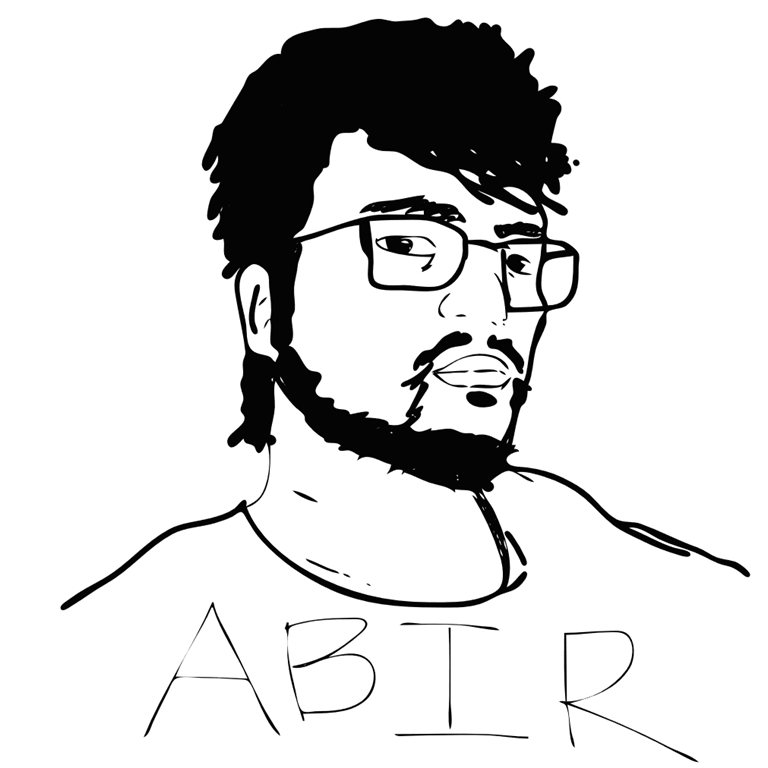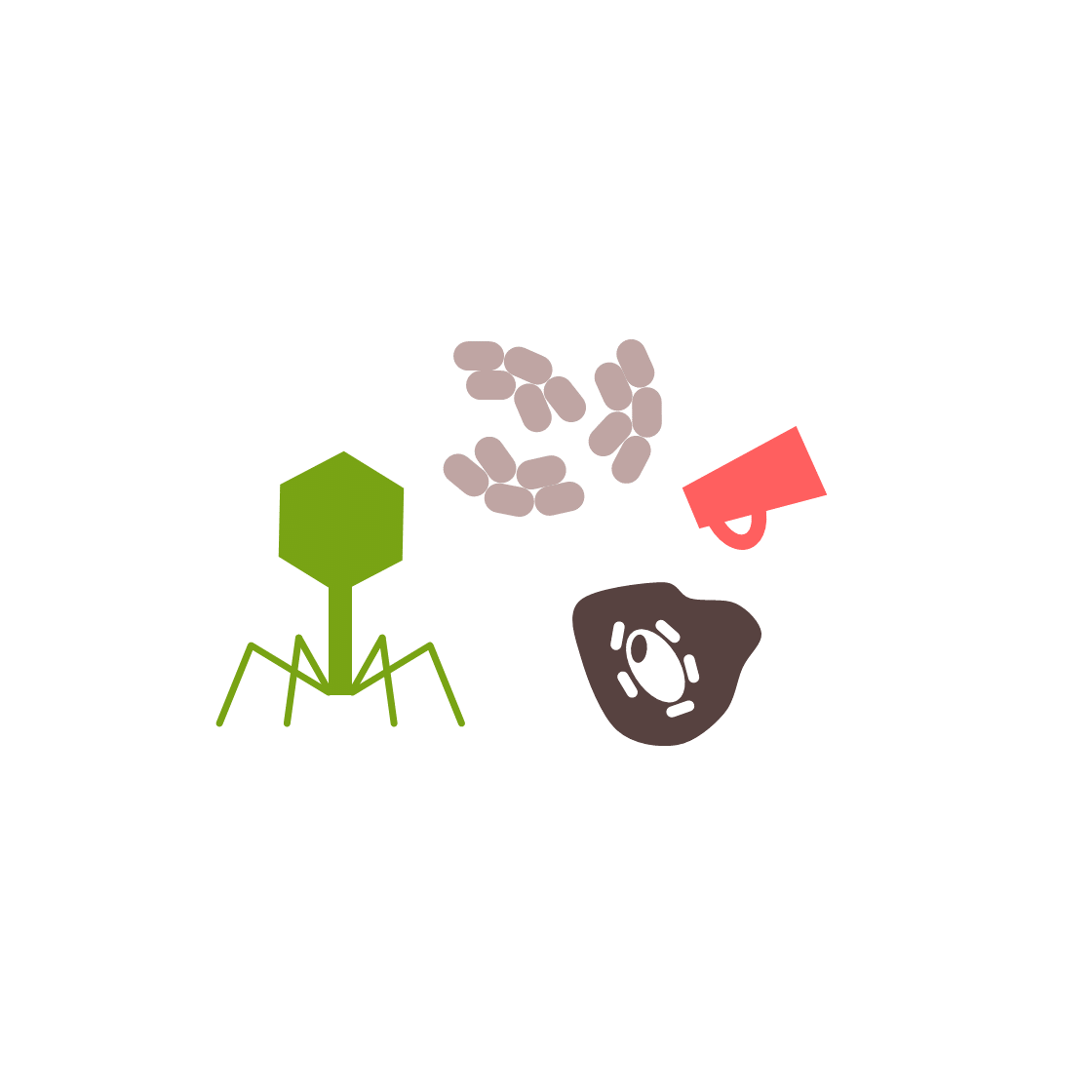 Principal Investigator
Nash Rochman is an Assistant Professor in the CUNY SPH
Department of Epidemiology and Biostatistics; an
Institute for Implementation Science in Population Health
Investigator; an NIH Special Volunteer; and an editor at
Biology Direct.
Nash was drawn to a career in biology to help distil complex and confusing data into predictive models for disease. He completed his undergraduate education at Bard College of Simon's Rock and Brown University and pursued his PhD advised by Sean Sun in The Johns Hopkins University Cell Biomechanics Lab. Nash went on to pursue a postdoctoral fellowship centered on pandemic viral evolution advised by Eugene Koonin
in the NIH Evolutionary Genomics Research Group. Prior to joining CUNY, Nash was a Principal Investigator at the NIH in the Independent
Research Scholar Program. Nash splits his time between NYC and DC where he lives with his wife Anita.
In many locations, Nash can be found playing jazz trumpet.
email
publications
LinkedIn
Principal Investigator
Nash Rochman is an Assistant Professor in the CUNY SPH
Department of Epidemiology and Biostatistics; an
Institute for Implementation Science in Population Health
Investigator; an NIH Special Volunteer; and an editor at
Biology Direct.
Nash was drawn to a career in biology to help distil complex and confusing data into predictive models for disease. He completed his undergraduate education at Bard College of Simon's Rock and Brown University and pursued his PhD advised by Sean Sun in The Johns Hopkins University Cell Biomechanics Lab. Nash went on to pursue a postdoctoral fellowship centered on pandemic viral evolution advised by Eugene Koonin
in the NIH Evolutionary Genomics Research Group. Prior to joining CUNY, Nash was a Principal Investigator at the NIH in the Independent
Research Scholar Program. Nash splits his time between NYC and DC where he lives with his wife Anita.
In many locations, Nash can be found playing jazz trumpet.
email
publications
LinkedIn
 Senior Research Associate
Peter Vlasov has over 20 years experience in computational biology. He completed his PhD in applied physics and mathematics from Moscow Institute of Physics and Technology. Peter began his scientific career in the area of structural bioinformatics at the Institute of Molecular Biology (Russia). After spending several years applying these techniques in the private sector for the drug-design company Algodign LLC, Peter returned to publicly funded research within the Center for Genomic Regulation (Spain) and the Institute of Science and Technology (Austria). Peter's current research focuses on the development of computational methods in evolutionary and systems biology. In addition to his research, Peter has made advances in computational biology through his contributions to educational initiatives for both university students and children designed to expand and diversify the biomedical workforce. Peter currently resides in Barcelona with his family where he can be found lifting heavy things before heading out to a gallery opening.
email
publications
LinkedIn
Senior Research Associate
Peter Vlasov has over 20 years experience in computational biology. He completed his PhD in applied physics and mathematics from Moscow Institute of Physics and Technology. Peter began his scientific career in the area of structural bioinformatics at the Institute of Molecular Biology (Russia). After spending several years applying these techniques in the private sector for the drug-design company Algodign LLC, Peter returned to publicly funded research within the Center for Genomic Regulation (Spain) and the Institute of Science and Technology (Austria). Peter's current research focuses on the development of computational methods in evolutionary and systems biology. In addition to his research, Peter has made advances in computational biology through his contributions to educational initiatives for both university students and children designed to expand and diversify the biomedical workforce. Peter currently resides in Barcelona with his family where he can be found lifting heavy things before heading out to a gallery opening.
email
publications
LinkedIn
 MPH Scholar
Delaney Collins completed her undergraduate studies in Cell and Molecular Biology at the University of Utah. Graduating during the COVID-19 pandemic; her work in oncology; and volunteering in a children's hospital all played important roles in shaping her interest in public health. Her research interests lie in finding ways to use molecular data to solve large-scale public health problems. Outside of work and school, Delaney enjoys reading, baking, and hiking all over the diverse Utah terrain.
email
MPH Scholar
Delaney Collins completed her undergraduate studies in Cell and Molecular Biology at the University of Utah. Graduating during the COVID-19 pandemic; her work in oncology; and volunteering in a children's hospital all played important roles in shaping her interest in public health. Her research interests lie in finding ways to use molecular data to solve large-scale public health problems. Outside of work and school, Delaney enjoys reading, baking, and hiking all over the diverse Utah terrain.
email
 Doctoral Scholar
Eslam Abousamra completed his undergraduate degree in molecular biology and applied statistics at Connecticut College. He went on to pursue his MPH in Epidemiology at the University of Washington advised by Prof. Trevor Bedford centered on infectious disease forecasting, surveillance, and the complex dynamics of respiratory viral interference. His current research focuses on applying machine learning methods to improve public health surveillance and intervention, in particular, with respect to antibiotic resistance. Originally from Alexandria, Egypt, Eslam lives in NYC.
email
LinkedIn
Doctoral Scholar
Eslam Abousamra completed his undergraduate degree in molecular biology and applied statistics at Connecticut College. He went on to pursue his MPH in Epidemiology at the University of Washington advised by Prof. Trevor Bedford centered on infectious disease forecasting, surveillance, and the complex dynamics of respiratory viral interference. His current research focuses on applying machine learning methods to improve public health surveillance and intervention, in particular, with respect to antibiotic resistance. Originally from Alexandria, Egypt, Eslam lives in NYC.
email
LinkedIn
 Doctoral Scholar
Bridget Dela Akasreku comes to public health with over seven years of clinical experience as a physician assistant in Ghana. Her current work focuses on HIV epidemic forecasting to evaluate the impact of public health interventions among marginalized populations in Kenya and beyond. Bridget is committed to applying these computational techniques to drive evidenced-based policy decisions. Beyond research, she teaches MPH courses in policy and intervention design. Bridget splits her time between New York and New Jersey.
email
LinkedIn
Doctoral Scholar
Bridget Dela Akasreku comes to public health with over seven years of clinical experience as a physician assistant in Ghana. Her current work focuses on HIV epidemic forecasting to evaluate the impact of public health interventions among marginalized populations in Kenya and beyond. Bridget is committed to applying these computational techniques to drive evidenced-based policy decisions. Beyond research, she teaches MPH courses in policy and intervention design. Bridget splits her time between New York and New Jersey.
email
LinkedIn
 Research Associate
Abir Bhuiyan completed his M.S. in Population Health Informatics at CUNY SPH. His research focuses on measuring the accessibility of LLM responses to common medical queries. Outside of the lab, Abir wears a few different hats, as both a data analyst with the City of New York and manager of a small business.
email
LinkedIn
Research Associate
Abir Bhuiyan completed his M.S. in Population Health Informatics at CUNY SPH. His research focuses on measuring the accessibility of LLM responses to common medical queries. Outside of the lab, Abir wears a few different hats, as both a data analyst with the City of New York and manager of a small business.
email
LinkedIn
 MPH Scholar
Nicole Perez completed her B.S. in Biochemistry at UC Riverside. Working in a hospital laboratory inspired her to pursue a career in public health. Nicole's research focuses on understanding how LLMs encode associations between demographic characteristics and common health conditions. In her spare time, Nicole enjoys relaxing with her dog and searching for the best matcha latte in SoCal.
email
MPH Scholar
Nicole Perez completed her B.S. in Biochemistry at UC Riverside. Working in a hospital laboratory inspired her to pursue a career in public health. Nicole's research focuses on understanding how LLMs encode associations between demographic characteristics and common health conditions. In her spare time, Nicole enjoys relaxing with her dog and searching for the best matcha latte in SoCal.
email
 MPH Scholar
Ivy Kosater holds a bachelor's degree in biochemistry from Florida State University. After spending the years following her undergraduate education working in the field of bioinformatics, she decided to pursue an MPH in Epidemiology and Biostatistics at CUNY SPH to apply her computational skills towards improving population health outcomes. Her current work focuses on understanding how antibiotic exposure affects the human gut microbiome. Outside of school and research, you can find her biking around Brooklyn or at the cinema.
email
MPH Scholar
Ivy Kosater holds a bachelor's degree in biochemistry from Florida State University. After spending the years following her undergraduate education working in the field of bioinformatics, she decided to pursue an MPH in Epidemiology and Biostatistics at CUNY SPH to apply her computational skills towards improving population health outcomes. Her current work focuses on understanding how antibiotic exposure affects the human gut microbiome. Outside of school and research, you can find her biking around Brooklyn or at the cinema.
email
 MPH Scholar
Mebrahtom Zeweli completed a B.S. in Health Promotion from Jimma University and an MPH from Addis Ababa University, Ethiopia. His research spans health risk factor epidemiology and health information systems with particular interests in population movement as a risk factor for vector-born disease and public health data quality management, respectively. Mebrahtom has also managed national disease control and elimination initiatives and previously served as a volunteer during the 2014-6 Ebola Virus Disease outbreak in West Africa. His current research focuses on understanding the impact of climate and environmental exposures on chronic disease. Outside the lab, he enjoys hiking and exploring new places.
email
publications
LinkedIn
MPH Scholar
Mebrahtom Zeweli completed a B.S. in Health Promotion from Jimma University and an MPH from Addis Ababa University, Ethiopia. His research spans health risk factor epidemiology and health information systems with particular interests in population movement as a risk factor for vector-born disease and public health data quality management, respectively. Mebrahtom has also managed national disease control and elimination initiatives and previously served as a volunteer during the 2014-6 Ebola Virus Disease outbreak in West Africa. His current research focuses on understanding the impact of climate and environmental exposures on chronic disease. Outside the lab, he enjoys hiking and exploring new places.
email
publications
LinkedIn
 MPH Scholar
Safa Amir comes to public health with a background in psychology, motivated to bring a behavioral lens to infectious disease modeling. Here current work focuses on examining how diversity in individual daily activities and epidemic awareness impacts the spread of infectious diseases. Safa lives in Dallas, where she enjoys gardening, hiking, and taking long road trips to unwind and explore new places.
email
MPH Scholar
Safa Amir comes to public health with a background in psychology, motivated to bring a behavioral lens to infectious disease modeling. Here current work focuses on examining how diversity in individual daily activities and epidemic awareness impacts the spread of infectious diseases. Safa lives in Dallas, where she enjoys gardening, hiking, and taking long road trips to unwind and explore new places.
email
Previous Members













